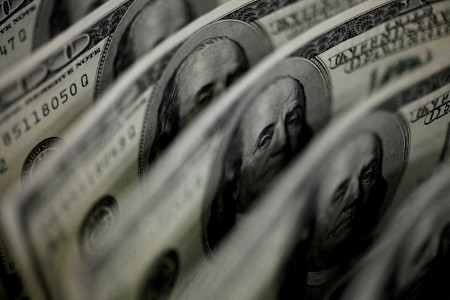




Quarterly Economic Growth Release: More BSP cuts to come
 DOWNLOAD
DOWNLOAD

Monthly Economic Update: Fed catches up
 DOWNLOAD
DOWNLOAD

Inflation Update: Steady and mellow
 DOWNLOAD
DOWNLOAD


US yields drift higher amid Japan FX intervention worries

NEW YORK, June 27 – US Treasury yields rose on Wednesday amid a pickup in inflation in other countries, fears of intervention from Japanese authorities to boost the yen, and worries around liquidity at the end of the month.
Higher-than-expected inflation in Canada lifted US yields on Tuesday. On Wednesday it was the turn of Australia, where consumer inflation accelerated to a six-month high in May catching traders off-guard and prompting markets to raise the chances of another interest rate hike this year.
Given the lack of significant US economic data on the calendar on Wednesday, yields were also drifting higher ahead of government issuance of USD 70 billion in five-year notes, part of $183 billion in total coupon debt sales by the Treasury this week. Ultimately, however, the debt sale saw solid demand, analysts said, with the Treasury issuing the paper at a high yield of 4.331%, below the expected rate at the time of the bid deadline, a sign that investors were willing to pay up.
“A lot of investors are trying to participate in auctions because it’s a way to get quite a bit of bonds on their books without materially exposing themselves to liquidity constraints,” said Gennadiy Goldberg, head of US rates strategy at TD Securities USA.
Five-year yields rallied after the auction, although they still ended up adding nearly eight basis points on the day to 4.339%.
In Japan, the yen dropped to its lowest level since 1986 against the dollar, sparking concerns there would be another intervention from Japanese authorities to boost the currency.
“Markets are a little bit worried about Japan having to sell Treasuries to intervene in the foreign exchange market, which would push rates a little bit higher,” said Goldberg.
Meanwhile, as the end of the month and the quarter approaches, liquidity in money markets could become challenging as dealers close their books, pressuring Treasuries.
“There’s a bit of concern about what happens in repo (repurchase agreements) heading into month end, may be some pressures there,” said Subadra Rajappa, head of US rates strategy at Societe Generale.
On the monetary side, Fed officials reiterated this week that more inflation data is needed for the central bank to move to a less restrictive stance.
On Wednesday, traders of futures contracts tied to the policy rate were betting on a total of 44 basis points in rate cuts for 2024. Personal consumption expenditures inflation data on Friday will be a key factor for investors to assess the extent of any rate cuts this year.
Benchmark 10-year yields were up about eight basis points to 4.316%% and 30-year yields added seven points to 4.447%. Two-year yields, which tend to more closely reflect monetary policy expectations, were nearly two points higher at 4.749%.
The gap between two- and 10-year yields remained deeply negative at about minus 43 basis points, but smaller than on Tuesday, when it hit its widest since December at minus 51.6 basis points.
An inversion in that part of the yield curve, which occurs when shorter-dated Treasuries yield more than longer-dated ones, is closely watched by investors as it has historically signalled a recession is coming.
Reporting by Davide Barbuscia; Editing by Anil D’Silva and Nick Zieminsk
This article originally appeared on reuters.com





 By Reuters
By Reuters